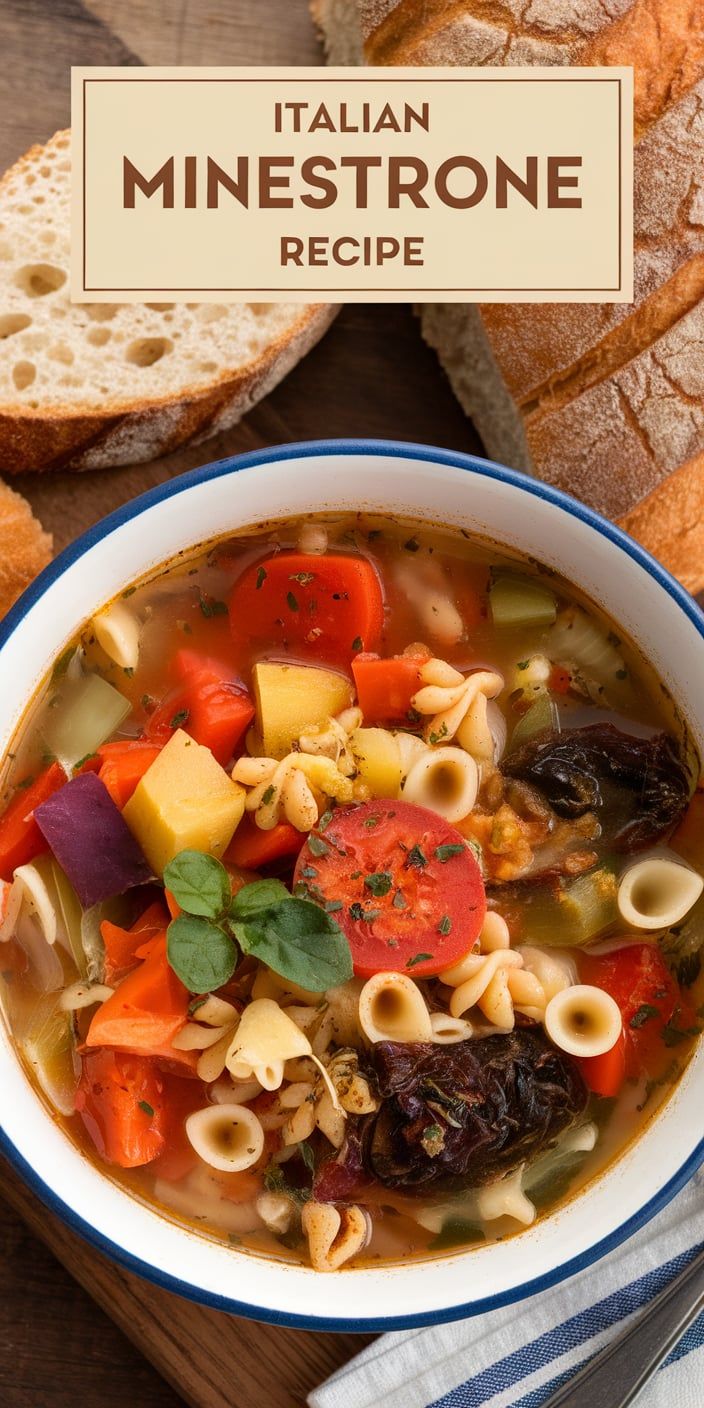Discover the warmth and richness of an authentic Italian minestrone recipe that brings the heart of Italian cuisine directly to your kitchen. This homemade Italian soup represents more than just a meal—it’s a culinary journey through tradition, flavor, and comfort.
Minestrone stands as a vibrant, hearty vegetable soup that captures the essence of Italian cooking. Each spoonful tells a story of regional ingredients, family recipes, and generations of cooking wisdom passed down through time. Whether you’re a seasoned cook or a kitchen novice, this authentic minestrone will transform your cooking experience.
Our recipe promises simplicity and depth, using fresh vegetables, aromatic herbs, and time-honored techniques to create a soup that’s both nutritious and deeply satisfying.
Key Takeaways
- Learn an authentic Italian minestrone recipe
- Discover the versatility of traditional Italian soup
- Explore fresh, seasonal vegetable combinations
- Master a nutrient-rich homemade Italian soup
- Create a comforting meal with simple ingredients

Understanding Traditional Italian Minestrone
The traditional minestrone represents more than just a simple soup in Italian cuisine. It embodies a rich culinary heritage that spans generations, telling a story of resourcefulness and flavor in every spoonful.
Origins of a Peasant Dish
Italian soup history reveals minestrone as a quintessential cucina povera (poor kitchen) creation. Originating in rural communities, this hearty soup was born from necessity, using whatever vegetables were available in local gardens or farms.
- Developed in rural Italian regions
- Created from seasonal, affordable ingredients
- Represented economic cooking strategies
Regional Italian Soups: A Culinary Journey
Regional Italian soups showcase remarkable diversity. Each area of Italy brings unique ingredients and cooking techniques to their minestrone, reflecting local agricultural traditions.
| Region | Unique Characteristics |
|---|---|
| Lombardy | Includes beans and rice |
| Liguria | Incorporates pesto |
| Tuscany | Uses bread as thickener |
Nutritional Powerhouse
Beyond its delicious taste, traditional minestrone offers remarkable health benefits. Packed with vegetables, legumes, and whole grains, this soup provides essential nutrients, fiber, and antioxidants.
“Minestrone is not just a meal, it’s a celebration of Italian culinary wisdom” – Italian Food Historian
Essential Ingredients for Italian Minestrone Recipe
Creating an authentic Italian minestrone soup starts with selecting the right minestrone ingredients. This hearty soup celebrates the best of Italian soup vegetables, bringing together a rich blend of flavors and nutrients.
The foundation of a perfect minestrone begins with a colorful array of fresh vegetables. Your core vegetable lineup should include:
- Ripe tomatoes
- Crisp carrots
- Tender celery
- Zucchini
- Onions
- Fresh garlic
Minestrone beans are crucial to the soup’s heartiness. Cannellini beans are the traditional choice, providing protein and a creamy texture. You can also experiment with borlotti or kidney beans for variety.
For pasta, choose small shapes that complement the soup’s consistency:
- Ditalini
- Small shells
- Orzo
“The secret to an extraordinary minestrone is using the freshest, highest-quality ingredients possible.” – Italian Culinary Tradition
Additional essential ingredients include quality vegetable or chicken broth, extra virgin olive oil, and a blend of herbs like basil, oregano, and thyme. A parmesan rind can add depth to your soup’s flavor profile.
Pro tip: Always choose seasonal, locally sourced vegetables to capture the most authentic Italian soup experience.
Step-by-Step Cooking Instructions
Learning how to make minestrone requires patience and attention to detail. This classic Italian soup is a delightful culinary journey that transforms simple ingredients into a hearty, nutritious meal. Let’s break down the cooking process step by step.
Preparing the Vegetables
Proper vegetable preparation is crucial for perfect minestrone consistency. Start by gathering fresh, seasonal vegetables. Dice them uniformly to ensure even cooking:
- Wash and chop carrots, celery, and onions
- Cut zucchini and potatoes into small cubes
- Mince garlic for intense flavor
Building the Soup Base
Creating a robust soup base is essential in minestrone cooking tips. Heat olive oil in a large pot and sauté your chopped aromatics until they become fragrant and slightly translucent.
“The secret to a great minestrone is layering flavors” – Italian Cooking Tradition
Adding Pasta and Final Seasonings
Select small pasta shapes like ditalini or orzo that complement the soup’s texture. Add pasta towards the end of cooking to prevent overcooking.
- Cook pasta directly in the soup broth
- Add beans for extra protein
- Season with fresh herbs like basil and parsley
Tips for Perfect Consistency
Achieving the ideal minestrone consistency requires careful liquid management. If the soup becomes too thick, add hot vegetable broth. For a thicker texture, let it simmer longer or mash some vegetables.
Serving and Enjoying Your Homemade Minestrone
Serving minestrone is an art that transforms a simple soup into a delightful culinary experience. Warm your ceramic bowls before ladling the rich soup to maintain its ideal temperature. A ceramic or earthenware bowl helps retain heat and provides an authentic Italian dining aesthetic.
Italian soup pairings can elevate your meal from good to exceptional. Consider serving your minestrone alongside crisp ciabatta bread from a local bakery or a rustic sourdough. A light arugula salad dressed with lemon vinaigrette complements the soup’s robust flavors perfectly.
Minestrone garnishes add both visual appeal and flavor complexity. Sprinkle freshly grated Parmigiano-Reggiano cheese on top, drizzle extra-virgin olive oil, or scatter chopped fresh basil leaves. For wine enthusiasts, a medium-bodied Chianti or Sangiovese pairs beautifully with the soup’s hearty profile.
Remember that minestrone is incredibly versatile. Feel free to experiment with seasonal vegetables or adapt the recipe to your taste preferences. Each variation tells a unique culinary story, reflecting your personal cooking style and creativity.
